EXTREME WEATHER
It was a tragic start to the year in Italy, with one of 2017’s biggest stories being the avalanche in Abruzzo in mid-January. A combination of heavy snowfall and successive earthquakes brought terror to areas still recovering from 2016’s deadly quakes, when a huge snowslide buried the Rigopiano hotel with guests and staff inside.
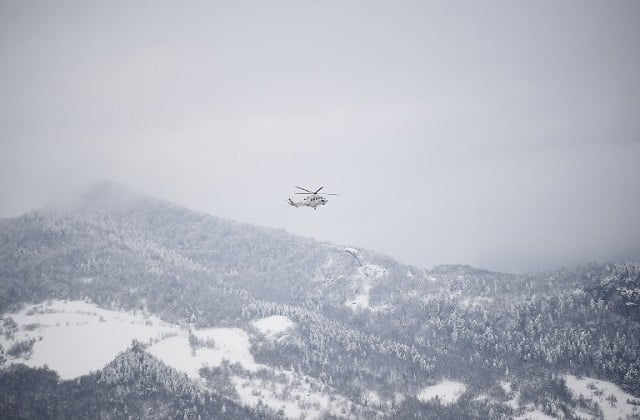
A rescue helicopter en route to the avalanche site. Photo: Filippo Monteforte/AFP
On the third day of search efforts, hampered by heavy snow, rescuers made contact with survivors and The Local live-blogged the rescue as they managed to save a total of 11 people from wreckage described as ‘apocalyptic’. Survivors later shared their stories of eating snow to stay hydrated and singing to keep their spirits up.
Sadly, 29 people died in the disaster. An official investigation is ongoing.
VIDEO: How Italian firefighters reached avalanche survivors
In February, we reported on a dramatic but slow-moving landslide tearing apart a village in central Italy and in March, a violent explosion at Mount Etna left ten people injured and dramatic eruptions continued for several days.
Over summer, Italy was hit by a heatwave so ferocious it was nicknamed “Lucifer”, as well as severe drought that prompted Rome to turn off its fountains and dried up the source of the River Po completely. The drought also sparked deadly wildfires across large parts of the country.
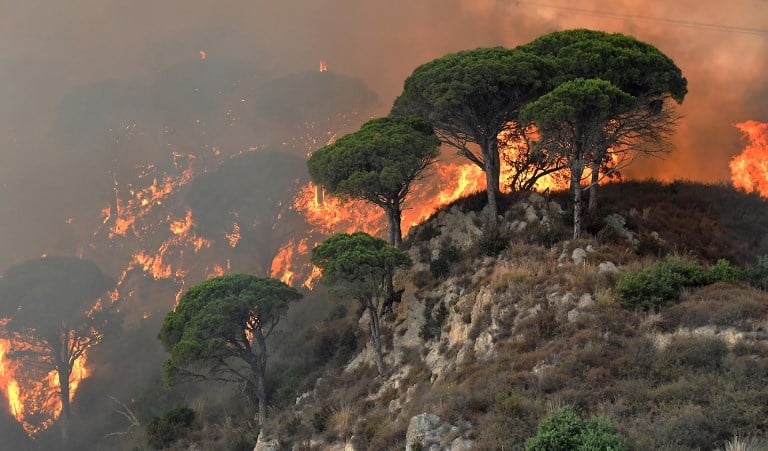
A wildfire in Messina, July 2017. Photo: Giovanni Isolino/AFP
In fact, this year was the driest in Italy since 1800. The trees lost could take as long as 15 years to grow back, while farmers' groups estimate that the combined effects of drought, heat and fire have caused some €2 billion of damage to Italian agriculture.
The autumn brought thunderstorms and floods which killed eight in the Livorno area with the mayor describing a “city on its knees” and criticizing the Civil Protection Agency for “underestimating” the severity of the situation.
POLITICS
This time last year, Prime Minister Paolo Gentiloni had just replaced Matteo Renzi, and he’s recently marked a full year in the top job.
However, plenty of other things have changed in the Italian political world since then. Most significantly, after months of debate Italy passed a new election law, finally getting the ball rolling for an election which is expected to take place early next March.
READ MORE: What you need to know about Italy's upcoming 2018 election
Local elections in June and November gave the centre-right (and Silvio Berlusconi) a boost, while they showed a drop in support for the ruling centre-left – which has been struggling with internal rifts and schisms throughout the year – and the Five Star Movement (M5S) failed to score any significant victories.
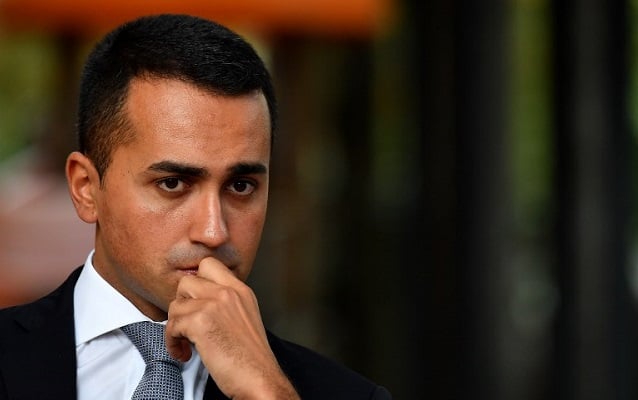
PM candidate Luigi Di Maio. Photo: Alberto Pizzoli/AFP
Speaking of the M5S, they voted in a new party leader in September: the sharply dressed Luigi Di Maio, whose style contrasts with that of his predecessor, ex-comic Beppe Grillo. Di Maio has also shown a softer stance towards the EU, and potential alliances with Italy’s other main parties, as the party leads the polls ahead of next year's election.
And as Catalonia battled for independence from Spain, two northern Italian regions held referendums on whether to seek greater autonomy from Rome. Their answer? A resounding “sì”.
TOURISM
Another big debate in Italy this year was whether the huge numbers of tourists to the country were doing more harm than good.
Authorities in Venice in particular introduced plenty of measures to crack down on excessive tourism: in March, the council announced a set of regulations aimed at cutting down visitor numbers in the crowded centre; in May, it banned all takeaway food shops from the centre – with an exception for artisanal gelaterias, naturally; in June, it banned new hotels from opening in the historic centre; and in November Italy’s transport minister announced that large cruise ships would soon be banned from the centre of the lagoon city.
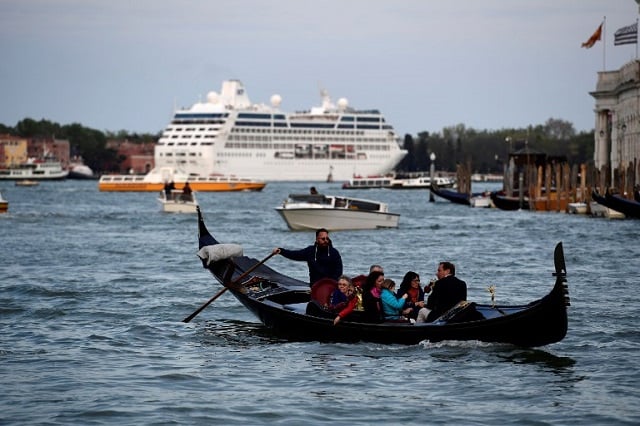
A cruise ship and a gondola navigate the entrance of the Grand Canal. Photo: Miguel Medina/AFP
Meanwhile the mayor of Venice made visitors feel less than welcome when he told they should expect to pay high prices – and even suggested that they learn some Venetian dialect before their trip.
READ MORE: ‘Tourism is killing Venice, but it’s also the only key to survival’
But it wasn’t the only city with a problem. Florence’s mayor announced plans to start hosing down the city’s church steps during lunchtime in a bid to deter snacking tourists, saying “if they sit there, they’ll get wet”, while Milan introduced a ban on selfie sticks, food trucks, and glass bottles in some parts of the city over the summer.
In the central region, the mayor of Amatrice was forced to ask visitors to stop taking selfies in the rubble of the quake-damaged town in spring, which has since been put on a list of the world's most endangered heritage.
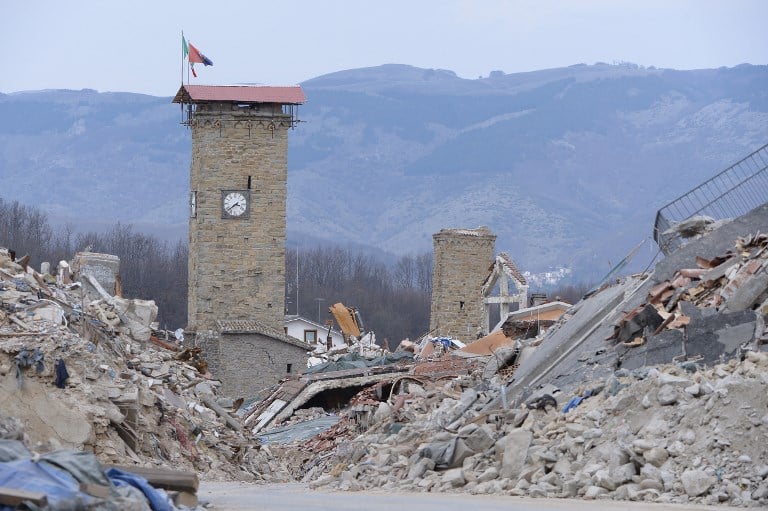
Amatrice in April 2017. Photo: Filippo Monteforte/AFP
Later in the year a village rebuilt stone by stone after a 1976 earthquake was declared Italy’s most beautiful, and a hotel in the quake-devastated region was named the world’s best.
MIGRATION
Migrant arrivals to Italy by sea fell significantly this year, particularly in the second half. The dangerous route to Italy from Libya was largely closed down at the end of June by a controversial deal Rome made with Libyan authorities, tribal leaders and – according to Libyan sources refuted by Rome – human traffickers.
However, the route still remains open, with a spike in arrivals in September in which Italy rescued 2,000 migrants in the Mediterranean. And while numbers of arrivals from Libya have fallen, arrivals from Tunisia, Algeria and Turkey have risen.
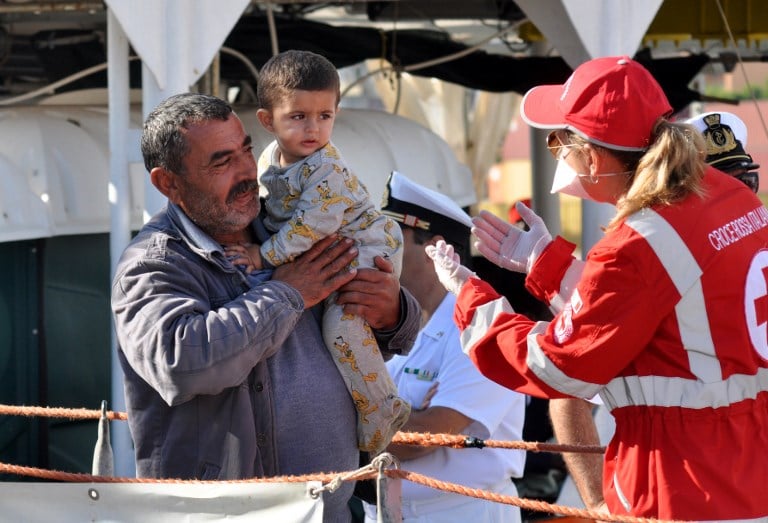
A rescue operation in October 2017. Photo: Alessandro Fucarini/AFP
Those on the far-right made sure the arrivals were a constant talking point, from calls to emulate US President Donald Trump's proposed travel ban to high-profile stunts by neo-Nazi groups decrying Italy's “invasion”. Migration is expected to weigh heavy on the minds of Italian voters in next year's election, with some saying the issue is driving them away from established parties and towards populists.
READ ALSO: What does it mean to be a 'New Italian'? The question facing a divided Italy
Yet Italy also began to look for more innovative solutions to the crisis: in September, the foreign ministry unveiled a programme under which business people with African roots are offered financing to pursue job-creating projects in their countries of origin. That same month, the government presented Italy's first ever official plan for the integration of migrants.
Italy's problems with integrating incomers were also evident in the debate over the “ius soli” bill, a proposal to give citizenship to Italian-born children of migrants who have spent a certain amount of time in the country and in its education system. However, a parliamentary vote on the bill was delayed in July, and the vote is now not expected before next year's election.
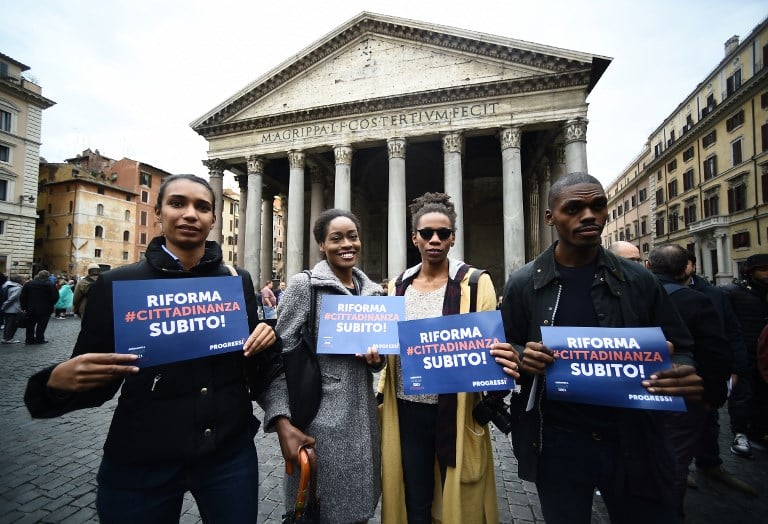
People demonstrating in favour of citizenship reform. Photo: Filippo Monteforte/AFP
And a different kind of migration made headlines this year: that of young, educated Italians, who are leaving Italy in their thousands as they remain the group most severely affected by the 2008 financial crisis, despite strong signs of recovery in Italy.
#METOO
Italian filmmaker Asia Argento was in the thick of one of 2017's biggest stories, the Harvey Weinstein scandal. The actor and director was one of the first high-profile women to say on the record that they accused the Hollywood producer of sexual assault.
Her allegations prompted an outpouring from Italian women who, under the hashtag #quellavoltache – “that time when” – shared their stories of harassment.
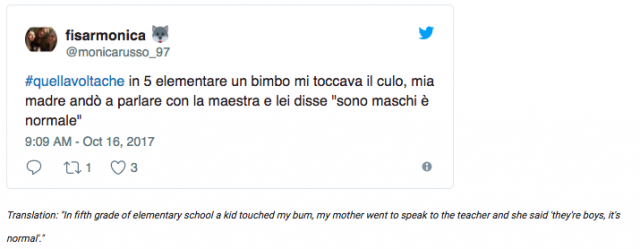
Italian media commentators, however, were less sympathetic. Argento subsequently announced that she was leaving Italy to escape its “victim-blaming” culture.
MAFIA
2017 proved that organized crime is still very much present in Italy today. As one generation of mafiosi ended with the death of Totò “The Beast” Riina, experts warned of a new breed of criminals rising to take their place: better hidden, more diverse and further north.
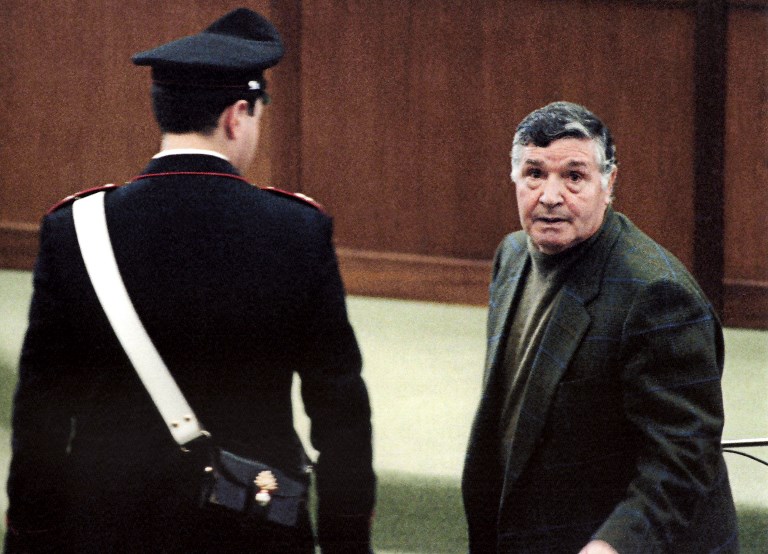
Salvatore “Totò” Riina at his trial in 1993. Photo: Alessandro Fucarini/AFP
Dozens of local authorities remain dissolved for mafia infiltration, while the Roman district of Ostia, which in November elected its first council in two years, showed worrying signs of preparing for clan war.
Even tourists risked being caught up in mafia business. That restaurant you ate at on holiday? It might be run by the mob. And if you were tempted to join one of Sicily's mafia tours, locals said: please don't.
CULTURE
Italy has long struggled with the problem of financing maintenance for its crumbling cultural treasures. There were tragic consequences in October, when Florence was forced to close one of its most beautiful churches after a piece of loose stonework fell and killed a Spanish tourist.
But there was also better news this year, as the private sector increasingly stepped in to save monuments, historic sites, and artworks.
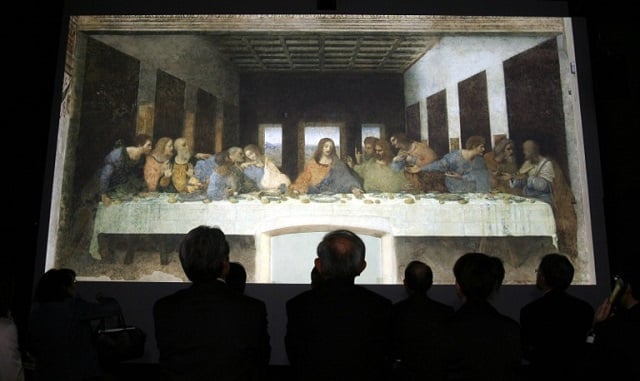
Photo: AFP
In April, the founder of Italian food chain Eataly announced that he would fund a €1 million hi-tech restoration of Leonardo Da Vinci's masterpiece, The Last Supper, to preserve the delicate painting.
One of our most popular stories of the year came in May, when the country announced it would “give away” over 100 castles, monasteries, and towers across the country to people willing to transform them into tourist sites.
There were also surprising archaeological discoveries, from the ancient aqueduct stumbled across by workers on the Rome Metro to a “Sicilian Stonehenge” found by amateur archaeologists, to some 6,000-year-old wine discovered in a cave.
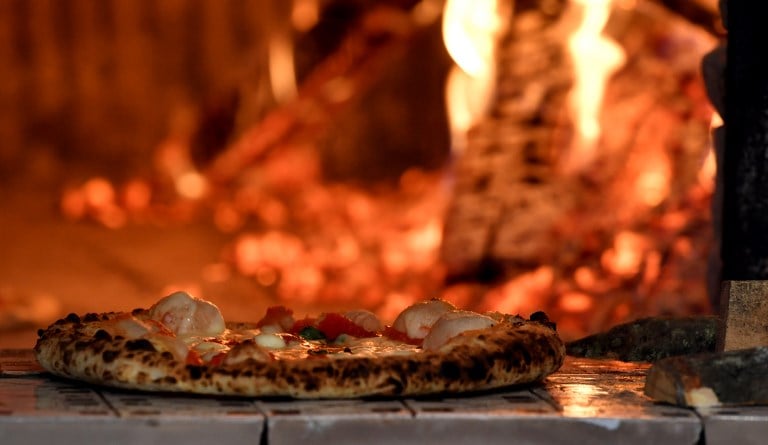
And in July, Italy got two new Unesco World Heritage sites, after a year of not submitting any new bids to allow other countries to catch up. A few months later, Unesco also declared Neapolitan pizza part of the world's “intangible cultural heritage”.
SPORT
We couldn't review 2017 without mentioning the World Cup that wasn't (sorry). Italy lost its shot at the 2018 football tournament in a humiliating play-off against Sweden, leading to tears, recriminations and more than one sacking.
Frantic Italians Googled “Italia-Svezia” more than any other news event and watched their beloved goalkeeper, Gianluigi Buffon, weep on the sidelines as it became clear that the Azzurri wouldn't be playing in the World Cup final matches for the first time in 60 years.
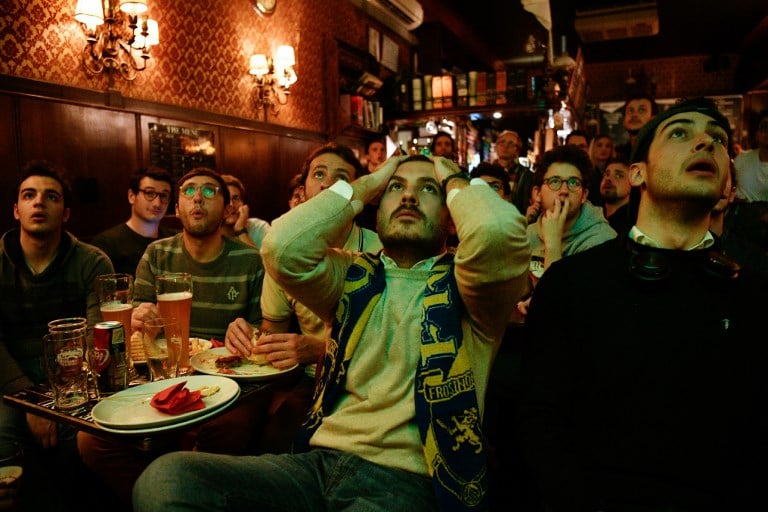
Italy's football fans in mourning. Photo: Piero Cruciatti/AFP
National football, meanwhile, battled with its long history of racism and anti-Semitism, as stickers of Anne Frank in an AC Roma jersey posted by fans of arch rivals Lazio exposed the prejudice that still dogs Italian sport.
READ ALSO: ‘What does hypochondriac mean?': What Italy Googled most in 2017
But there were more positive role models, too, such as Paralympic fencer Beatrice Vio, who celebrated a new world champion title this year. Vio, who lost her legs and forearms to meningitis, says her motto is: “Life is too good”.
And finally…
In some of Italy's sillier stories of 2017, a gelateria debuted ice cream for dogs, toy cats took over a seaside town, and wild wolves returned to Rome.
Berlusconi ate a burger, the internet celebrated Italy's dancing oldies, and the country's crappiest museum – of cowpats – opened in Emilia-Romagna.
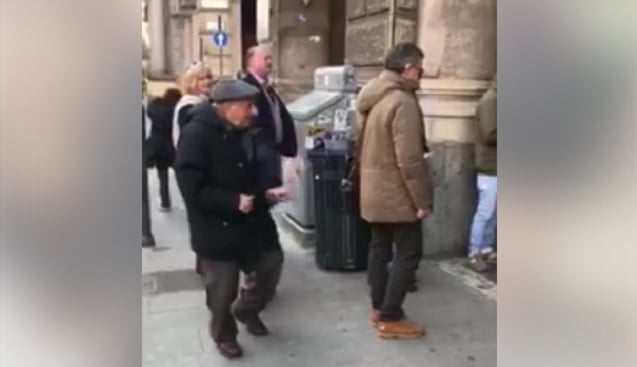
A dancing grandpa captured in a video that went viral in February. Credit: Alberto Forni
Italy's oldest astronaut completed his mission with success, a World War II parachutist celebrated his 96th birthday by jumping out of a plane, a Sardinian-born nonna became Europe's oldest living person, and Swedes swapped lives with Italians to find out just why this country's people live so dang long.
And justice was done for Roman poet Ovid, who after 2,000 years of exile was finally – finally – made a persona grata in Rome once more. Welcome home.
READ ALSO: Seven inspiring people The Local interviewed in 2017

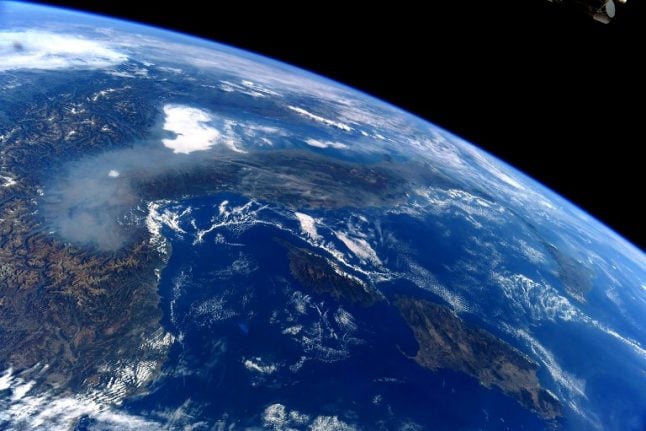
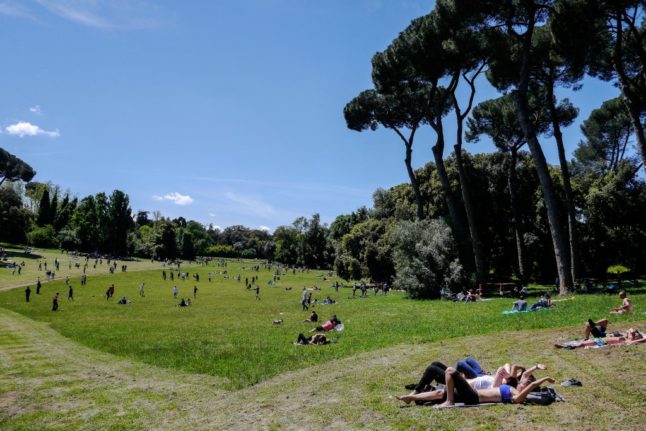
 Please whitelist us to continue reading.
Please whitelist us to continue reading.